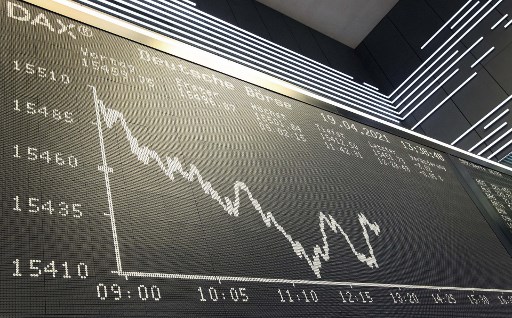
403
Sorry!!
Error! We're sorry, but the page you were looking for doesn't exist.
Bond return raises concerns about US Treasury market stability
(MENAFN) Recent events in the sovereign debt market have reignited fears of bond vigilantes, with the sharp sell-off of British government bonds leading to the downfall of British Prime Minister Liz Truss. This resurgence prompts speculation about whether the global investment community's financial discipline could next target the US Treasury market, potentially jeopardizing the United States' position as the primary provider of safe assets during global crises and undermining the dollar's status as the dominant reserve currency.
The possibility of such a scenario, while viewed as inconceivable by some, raises significant concerns about the resilience of the US Treasury market. Christopher Waller, a member of the Federal Reserve Board of Governors, recently asserted that the flight to the dollar during the financial crises of 2008 and 2020 served as conclusive evidence of the dollar's enduring status as the world's reserve currency. However, the notion of unassailable dominance may face challenges as bond vigilantes assert their influence.
Despite Waller's assertions, doubts persist regarding the sustainability of the dollar's supremacy, particularly in the face of potential scrutiny from bond vigilantes. While the dollar benefits from the support of the world's largest and most liquid debt markets, characterized by what economists term "network externalities," which foster widespread acceptance and usage, the increasing volatility in sovereign debt markets raises questions about the resilience of the dollar's position.
Furthermore, although the US economy's share of global gross product has diminished, the dollar's share of global reserves has only experienced a marginal decline. Yet, Waller's narrative overlooks a crucial aspect concerning the perceived safety of US Treasuries, which may no longer be as robust as traditionally assumed. As uncertainties loom over the stability of the US Treasury market, stakeholders must remain vigilant to potential shifts in global financial dynamics that could challenge established norms and paradigms.
The possibility of such a scenario, while viewed as inconceivable by some, raises significant concerns about the resilience of the US Treasury market. Christopher Waller, a member of the Federal Reserve Board of Governors, recently asserted that the flight to the dollar during the financial crises of 2008 and 2020 served as conclusive evidence of the dollar's enduring status as the world's reserve currency. However, the notion of unassailable dominance may face challenges as bond vigilantes assert their influence.
Despite Waller's assertions, doubts persist regarding the sustainability of the dollar's supremacy, particularly in the face of potential scrutiny from bond vigilantes. While the dollar benefits from the support of the world's largest and most liquid debt markets, characterized by what economists term "network externalities," which foster widespread acceptance and usage, the increasing volatility in sovereign debt markets raises questions about the resilience of the dollar's position.
Furthermore, although the US economy's share of global gross product has diminished, the dollar's share of global reserves has only experienced a marginal decline. Yet, Waller's narrative overlooks a crucial aspect concerning the perceived safety of US Treasuries, which may no longer be as robust as traditionally assumed. As uncertainties loom over the stability of the US Treasury market, stakeholders must remain vigilant to potential shifts in global financial dynamics that could challenge established norms and paradigms.

Legal Disclaimer:
MENAFN provides the
information “as is” without warranty of any kind. We do not accept
any responsibility or liability for the accuracy, content, images,
videos, licenses, completeness, legality, or reliability of the information
contained in this article. If you have any complaints or copyright
issues related to this article, kindly contact the provider above.

















Comments
No comment